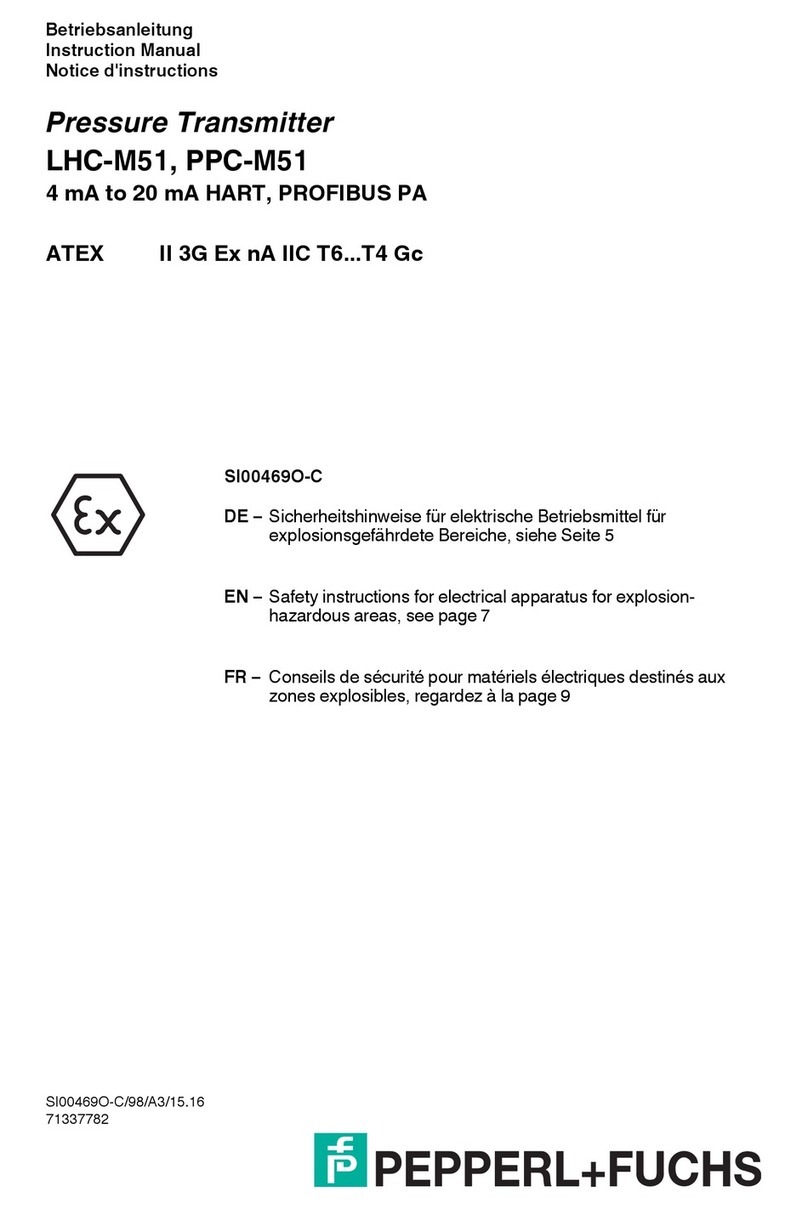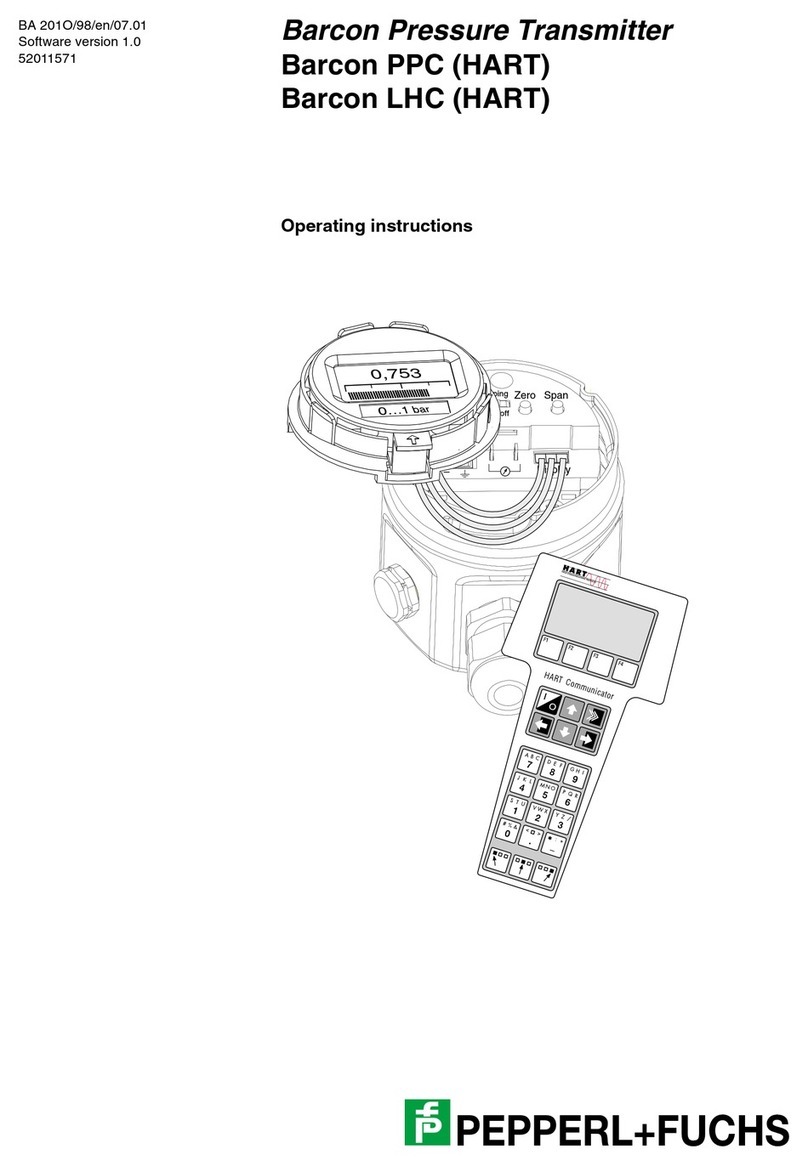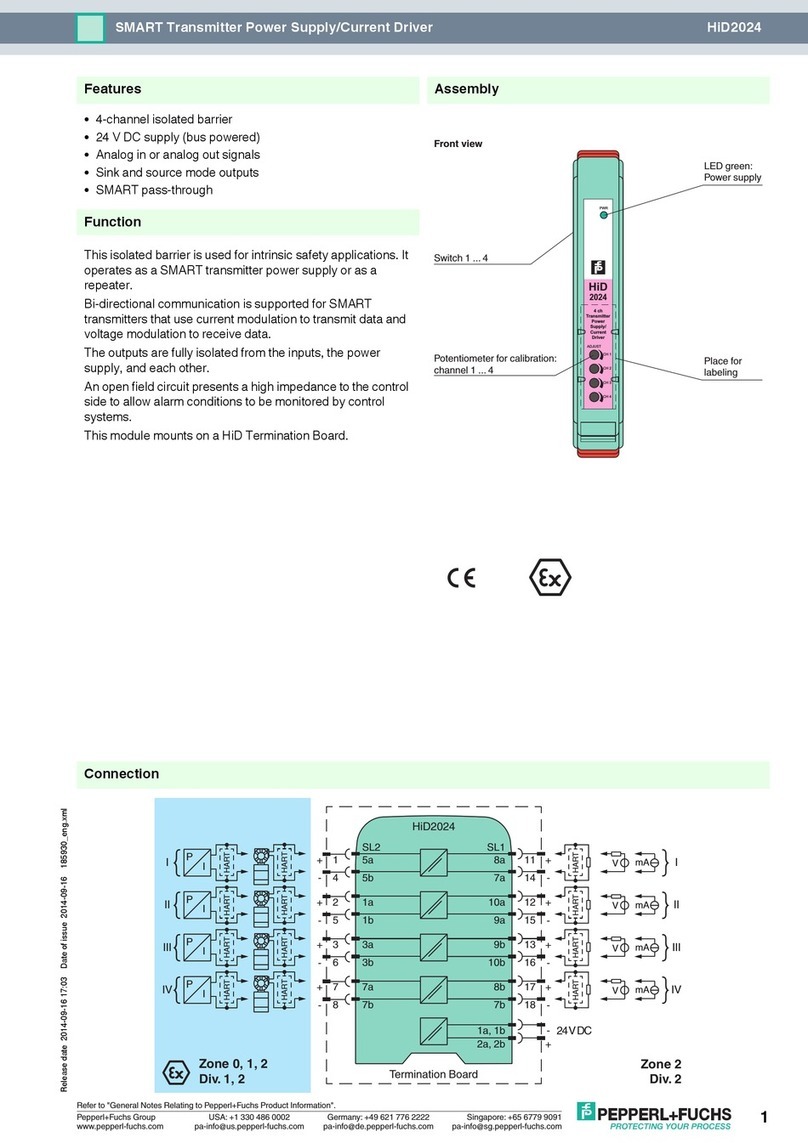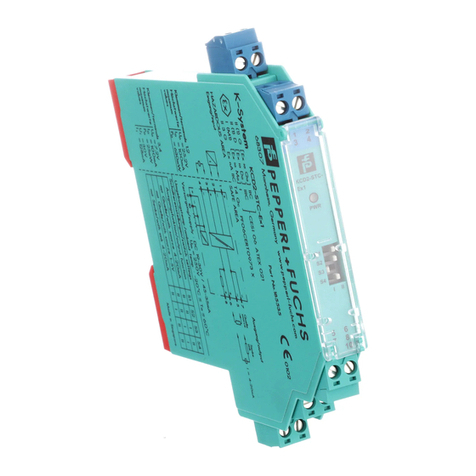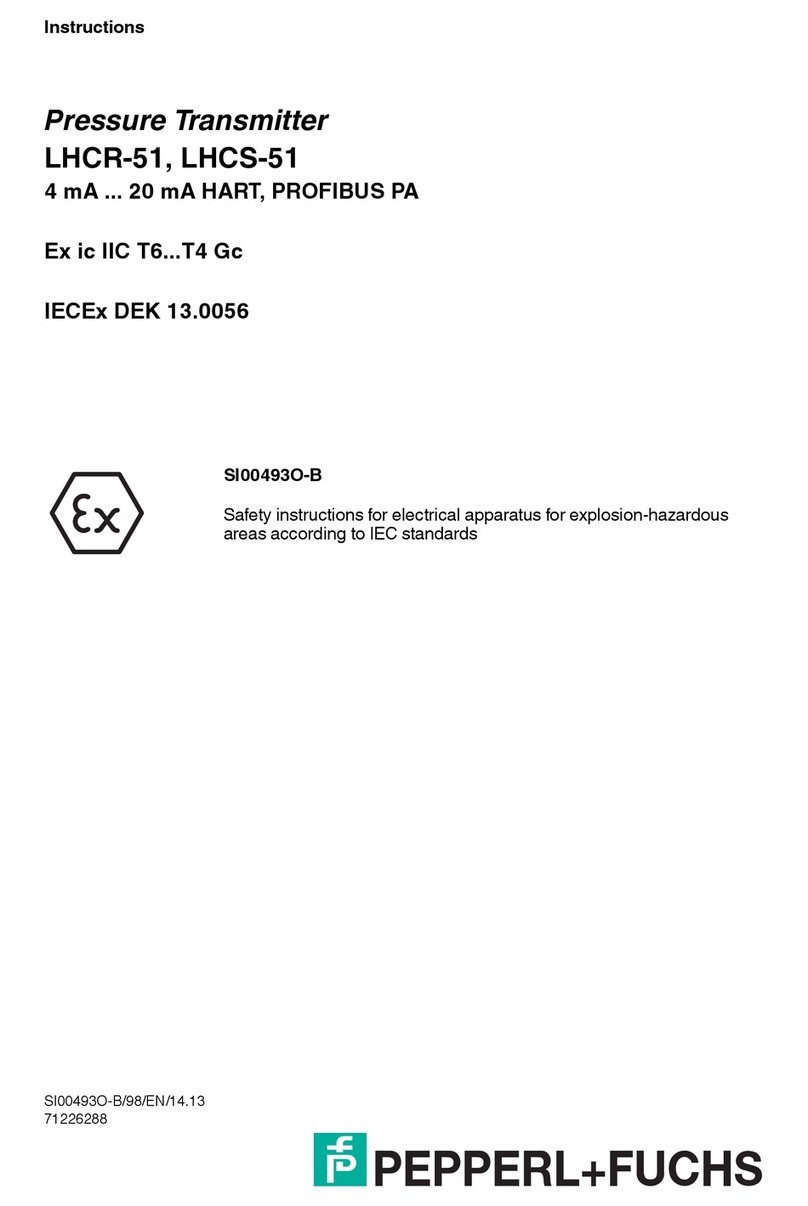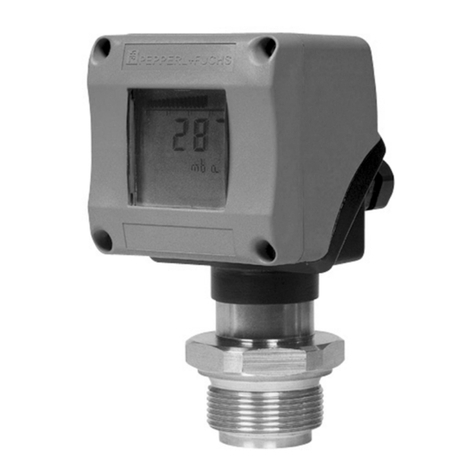
2021-04
10
Functional Safety HiD2022*, KFD2-STC5-(Ex)*, KFD2-STV5-(Ex)*
Product Description
KFD2-STV5-1-1, KFD2-STV5-2-1
This signal conditioner provides the galvanic isolation between field circuits and control
circuits.
The device supplies 2-wire and 3-wire SMART transmitters, and can also be used
with 2-wire SMART current sources.
It transfers the analog input signal as an isolated current value.
Digital signals may be superimposed on the input signal on the field side or on the control side
and are transferred bi-directionally.
If the HART communication resistance in the loop is too low, the internal resistance can
be used.
Test sockets for the connection of HART communicators are integrated into the terminals
of the device.
KFD2-STV5-Ex1-1, KFD2-STV5-Ex2-1
This isolated barrier is used for intrinsic safety applications.
The device supplies 2-wire and 3-wire SMART transmitters, and can also be used
with 2-wire SMART current sources.
The device transfers the analog input signal to the non-hazardous area as an isolated
current value.
Digital signals may be superimposed on the input signal in the hazardous or non-hazardous
area and are transferred bi-directionally.
If the HART communication resistance in the loop is too low, the internal resistance can
be used.
Test sockets for the connection of HART communicators are integrated into the terminals
of the device.
KFD2-STV5-Ex1.2O-1, KFD2-STV5-Ex1.2O-2
This isolated barrier is used for intrinsic safety applications.
The device supplies 2-wire and 3-wire SMART transmitters, and can also be used
with 2-wire SMART current sources.
It transfers the analog input signal to the safe area as two isolated output signals.
Digital signals may be superimposed on the input signal in the hazardous or non-hazardous
area and are transferred bi-directionally.
If the HART communication resistance in the loop is too low, the internal resistance can
be used.
Test sockets for the connection of HART communicators are integrated into the terminals
of the device.
KFD2-STV5-Ex2-1, KFD2-STV5-Ex2-2
This isolated barrier is used for intrinsic safety applications.
The device supplies 2-wire and 3-wire SMART transmitters, and can also be used
with 2-wire SMART current sources.
The device transfers the analog input signal to the non-hazardous area as an isolated
current value.
Digital signals may be superimposed on the input signal in the hazardous or non-hazardous
area and are transferred bi-directionally.
If the HART communication resistance in the loop is too low, the internal resistance can
be used.
Test sockets for the connection of HART communicators are integrated into the terminals
of the device.
